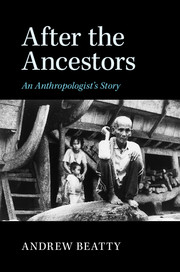Book contents
- Frontmatter
- Epigraph
- Contents
- List of illustrations
- Preface
- People
- Map
- Prologue
- 1 The statue
- 2 House key
- 3 Among women
- 4 Blood brothers
- 5 Daggers and debutants
- 6 Stormy Sunday
- 7 Three things that matter
- 8 The making of great men
- 9 A game of chess
- 10 Cholera song
- 11 Progress
- 12 Brothers and strangers
- 13 Exile and return
- 14 Field work
- 15 The chicken's neck
- 16 Good deaths and bad deaths
- 17 First family
- 18 Blessing
- 19 Half an egg
- 20 Waiting
- 21 Death of a chief
- 22 Ama Jonah at bay
- 23 Unravelling
- 24 The ethnographer and his double
- Epilogue
- Index
15 - The chicken's neck
Published online by Cambridge University Press: 05 March 2015
- Frontmatter
- Epigraph
- Contents
- List of illustrations
- Preface
- People
- Map
- Prologue
- 1 The statue
- 2 House key
- 3 Among women
- 4 Blood brothers
- 5 Daggers and debutants
- 6 Stormy Sunday
- 7 Three things that matter
- 8 The making of great men
- 9 A game of chess
- 10 Cholera song
- 11 Progress
- 12 Brothers and strangers
- 13 Exile and return
- 14 Field work
- 15 The chicken's neck
- 16 Good deaths and bad deaths
- 17 First family
- 18 Blessing
- 19 Half an egg
- 20 Waiting
- 21 Death of a chief
- 22 Ama Jonah at bay
- 23 Unravelling
- 24 The ethnographer and his double
- Epilogue
- Index
Summary
In the field things happen, as they do everywhere, in no particular order and according to no plan. It's a matter of bad luck if you arrive the day after a chief has died; better luck if you stumble on a violent row or a wedding negotiation. Hindsight smooths the transitions, imposes a design, makes the contingent necessary. But this is an illusion, for the anthropologist – unlike the novelist, who can order events and invent characters – is at the mercy of chance. The only continuity is autobiographical. Sometimes, however, an unexpected event – it need not be calamitous – disrupts the routines of village life and makes you aware, if not of a governing pattern, at least of a rearrangement. The dust settles and you realize you are standing in a different place. Others, too, may feel this change: nobody has moved, but by a shift of perspective, the picture, quite suddenly, looks different.
There had been a brawl in Thursday's market. Stalls were overturned, goods trampled. One or two youths sported black eyes. Most market-goers were unaware that anything had happened, and the rioters were quickly seen off, taking their quarrel across the Soi. Despite its reputation, Nias was a peaceable island. Individual acts of violence occurred but boorishness was rare. This was the countryside, with youth firmly under control.
But the incident had a history, a pattern of recurrence, and it aggravated relations between two villages. Bohö had been settled by pioneers from Orahua. After many generations, it had broken away to become a self-governing village with its own headman. But people from the hamlet of Hilidanaya'ö (which belongs to Orahua) still possessed land in the Bohö hills. Some had swiddens there, others had leased or pawned their land, and transfers made decades before were now the subject of fierce disputes. What sharpened the quarrel and made compromise more urgent was common clanship, for both sides were predominantly Bu'ulölö. But there were new aspects to an old quarrel – doubts among the elders over appropriate action, generational differences over what constituted authority. At least so it seemed to me.
- Type
- Chapter
- Information
- After the AncestorsAn Anthropologist's Story, pp. 210 - 226Publisher: Cambridge University PressPrint publication year: 2015

